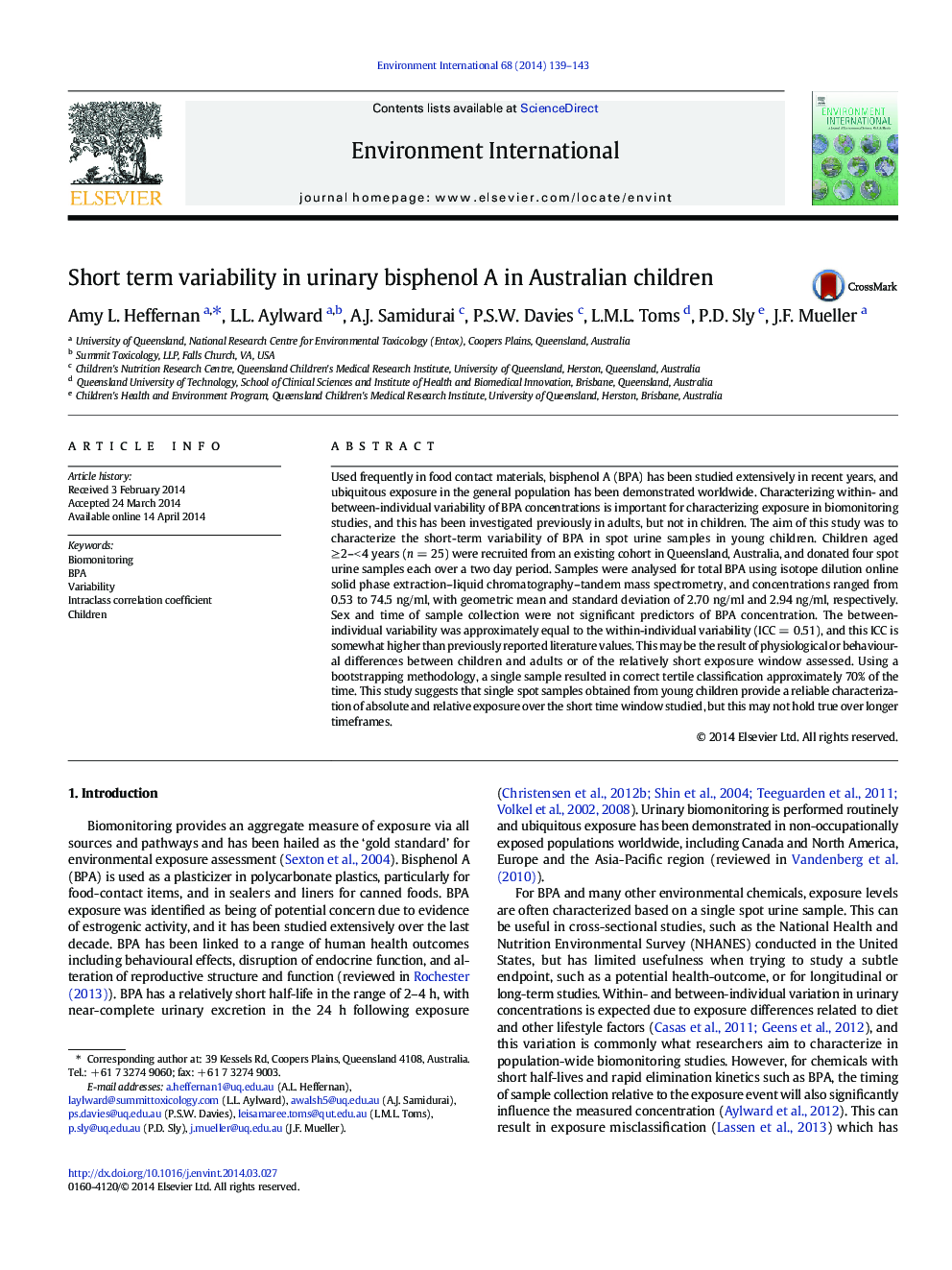| Article ID | Journal | Published Year | Pages | File Type |
|---|---|---|---|---|
| 6314019 | Environment International | 2014 | 5 Pages |
Abstract
Used frequently in food contact materials, bisphenol A (BPA) has been studied extensively in recent years, and ubiquitous exposure in the general population has been demonstrated worldwide. Characterizing within- and between-individual variability of BPA concentrations is important for characterizing exposure in biomonitoring studies, and this has been investigated previously in adults, but not in children. The aim of this study was to characterize the short-term variability of BPA in spot urine samples in young children. Children aged â¥Â 2-< 4 years (n = 25) were recruited from an existing cohort in Queensland, Australia, and donated four spot urine samples each over a two day period. Samples were analysed for total BPA using isotope dilution online solid phase extraction-liquid chromatography-tandem mass spectrometry, and concentrations ranged from 0.53 to 74.5 ng/ml, with geometric mean and standard deviation of 2.70 ng/ml and 2.94 ng/ml, respectively. Sex and time of sample collection were not significant predictors of BPA concentration. The between-individual variability was approximately equal to the within-individual variability (ICC = 0.51), and this ICC is somewhat higher than previously reported literature values. This may be the result of physiological or behavioural differences between children and adults or of the relatively short exposure window assessed. Using a bootstrapping methodology, a single sample resulted in correct tertile classification approximately 70% of the time. This study suggests that single spot samples obtained from young children provide a reliable characterization of absolute and relative exposure over the short time window studied, but this may not hold true over longer timeframes.
Related Topics
Life Sciences
Environmental Science
Environmental Chemistry
Authors
Amy L. Heffernan, L.L. Aylward, A.J. Samidurai, P.S.W. Davies, L.M.L. Toms, P.D. Sly, J.F. Mueller,
